by C. Dennis and W.R. Jacobi* (8/20)
Revised by E. Hammond**
Quick Facts…
- Soil compaction and grade changes adversely affect tree root health, and can lead to branch dieback and tree death.
- Prior to starting construction activities, evaluate existing trees in the area to see if preservation is worthwhile and feasible.
- Involve all parties associated with the construction project when determining which trees to preserve.
- Establish specific guidelines to prevent tree injury during the construction project.
- Minimize injury to existing trees with properly placed and properly sized barricades.
Why Preserve Existing Trees?
Shade trees add to the value of residential and commercial properties. During construction, established, healthy trees can be preserved with minimal effort or expense. Many trees are valuable enough to justify the extra concern.
The Preservation Planning Process
Many towns and cities in Colorado have tree protection specifications detailed in their land use code; property owners must adhere to the tree protection specifications spelled out in land use code of their town or city. Prior to beginning a construction project, the property owner should have a city forester, licensed arborist or certified tree appraiser, evaluate every tree in the proposed construction area to determine if preservation is worthwhile. For each existing tree, consider location, present size, future size, species, vigor, cost of preservation, and cost of removal.
While evaluating trees for preservation, visualize the future landscape. If plans call for preservation of trees near buildings or in landscapes, the trees should be sufficiently healthy to justify preservation. Some large, mature trees may not be structurally sound or esthetically appealing to warrant preservation. Older trees do not adapt to environmental changes as well as younger trees, thus it may be more practical to protect a 2 to 20 cm (1- to 8-inch) diameter tree than a larger, more mature tree. Some existing trees (particularly the smaller trees) relocated with a tree spade . Tree species differ in their ability to adapt to environmental change (Table 1). It may be impossible to preserve every tree.
To avoid short- and long-term problems, consult all parties involved in the project early in the planning process, including the property owner, contractor, architect, engineer, and arborist.
Once trees are selected for preservation, prepare a preservation plan that contains specific tree preservation methods. Set contractor guidelines for tree protection within contracts. Such guidelines include: prominently mark protected areas; erect barricades around designated trees; avoid vehicular traffic or parking in these restricted areas; and prohibit material storage, grading, and dumping of chemicals and other materials in restricted areas. To ensure compliance, contractors should have tree preservation bonds to cover potential noncompliance fines. Noncompliance fines are based on trees species, tree value, replacement costs if required, and the amount and type of damage done. Tree preservation bonds create an additional incentive for compliance. All parties should be aware of and agree to the consequences for noncompliance.
Before construction begins, conduct an on-site meeting with all parties, with special emphasis on educating the project contractor. Provide a handout that outlines the preservation plans to everyone working on the project.
| Table 1: Adaptability to environmental change. | ||
| Degree of Adaptability | ||
|---|---|---|
| High | Moderate | Low |
| American elm | Aspen | Bolleana white poplar |
| Common hackberry | Black walnut | Black locust |
| Cottonwood (spp) | Boxelder | Colorado blue spruce |
| Ginkgo | Bur oak | English oak |
| Green ash | Linden | Lombardy poplar |
| Honeylocust | Norway maple | Northern red oak |
| London planetree | Pine (spp) | Norway spruce |
| Siberian elm | White oak | |
| Silver maple | ||
| White ash | ||
| Willow (spp) | ||
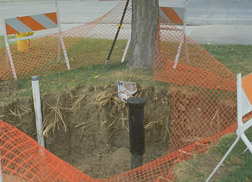
Figure 1: Roots lie in the upper 60 cm (24 inches) of soil and are easily damaged.
The Importance of Protecting a Tree’s Root System
Tree root systems contain large, woody roots, and small, short-lived absorbing roots. Large, woody roots are perennial and grow horizontally and are mostly in the top 15 to 60 cm (6 to 24 inches) of the soil (Figure 1). Their main functions include anchorage, water and mineral transport, and nutrient and water storage.
Smaller absorbing roots, averaging 0.16 cm (1/16 inch) in diameter, constitute the majority of the root system’s surface area. These roots grow outward and upward from the large roots, near the soil surface where minerals, water and oxygen are abundant. Their major function is to absorb water and minerals.
The root zone extends horizontally from the tree for a distance at least equal to the tree’s height. Preserve at least 50 percent of the root system to maintain a healthy tree. During summer construction, trees require adequate water, enough to saturate the soil, every one to two weeks.
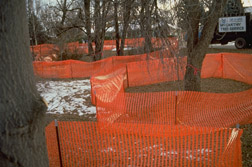
Figure 2: Highly visible tree protection barriers.
Preventing Injury to Existing Trees
Preventing damage is less costly than correcting it. Post highly-visible and strong barricades and signs around the trees and areas to be protected (Figures 2 and 3). The optimal size of barricaded areas varies by tree species, size, and construction project. For recently planted trees (one to four years), the area under the branches (dripline) should be adequate. For minimal protection of trees older than four years, barricades should extend beyond the dripline; for each 2.5 cm (1 inch) of trunk diameter, extend the protection area an additional 30 cm (1 ft). For additional protection, a layer of wood chips 10 to 15 cm deep (4 to 6 inches) can be placed around each tree prior to placement of the barricades. Examine trees and barricades at least once a week during construction.

Figure 3: Ideally, the protection barriers should extend beyond the dripline. Reprinted with permission from Tree City USA Bulletin No. 7, National Arbor Day Foundation.
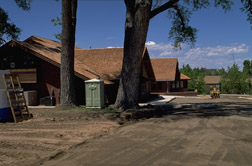 Figure 4: Surface grading severs many roots. |
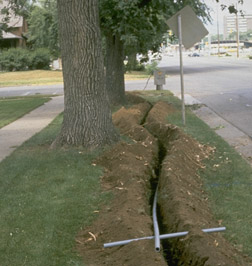 Figure 5: Trenching near trees can severely damage root systems. |
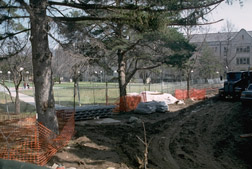 Figure 6: Construction vehicles can damage the existing soil structure by compressing soil particles. |
 Figure 7: Within two years of adding 30 cm (12 inches) of soil, this tree died. |
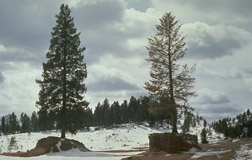 Figure 8: Lowering the grade severs roots and kills trees. |
Avoid Direct Injury to Existing Trees
There are four general forms of direct tree injury caused by mechanized equipment: bark removal, branch breakage, surface grading and trenching injury (Figures 4 and 5).
Bark removal or “skinning” of the trunk can be caused by any type of equipment. This can easily kill the tree, because it cannot survive without bark. Breakage of lower branches may make the tree unsightly or remove too many leaves, causing stress. Surface grading removes surface vegetation and topsoil that contains many absorbing roots. Also, injury often occurs to the tree base. Trenching for utilities can also cause substantial root damage and should be done far away from existing trees. In new developments, this can be done easily. Where the trench must pass under or near a tree, avoid substantial injury by using a power auger to bore a tunnel under the roots. If trenching is unavoidable, place the trench as far from the trunk as possible (minimum 2.5 meters or 8 feet), cutting as few roots as possible. Cleanly prune cut roots and refill trenches as soon as possible to prevent excessive moisture loss. Wounds make the tree highly susceptible to root pathogens and decay fungi. Decline and death can result if more than 40 percent of the stem or roots are damaged or killed. Stressed trees are also more susceptible to insects such as bark beetles and borers.
Avoid Soil Compaction Problems
After a tree is established, any activity that changes the soil condition is extremely detrimental to its health. Construction traffic compacts soil most severely near the surface, the area where the majority of tree roots lie (Figure 6). Soil compaction decreases soil permeability and interferes with essential gas exchange processes as well as surface and subsurface drainage. When root growth is restricted by compacted soils, less nutrients and water are available for plant growth. These factors limit root growth, reduce tree vigor and can cause tree death. Decline and dieback may gradually appear over a period of years.
It is much easier to avoid soil compaction than to correct it. Keep construction traffic and material storage away from tree root areas. Apply a 10 to 15 cm layer (4 to 6 inches) of wood chips around all protected trees to help reduce compaction from vehicles that inadvertently cross the barricades.
Avoid Soil Fills
When excessive amounts of soil are added around a tree base, the additional soil interferes with normal air and moisture circulation to the roots (Figure 7). Soil fills subject roots to improper gas exchange and can lead to carbon dioxide or toxic gas buildup. Minor fills with topsoil of less than 8 cm (3 inches) will not harm most trees. The topsoil should be high in organic matter and have good drainage properties—it should not be clay. Major changes in grading require an air supply to the roots. This can be accomplished with a drywell.
Early symptoms of decline from excessive fill are small leaf size and premature fall coloration. Dieback of twigs and progressive dying of larger stems in the upper crown also occurs. This dieback may not be noticed for several years, depending on tree species and initial tree health.
Avoid Soil Cuts
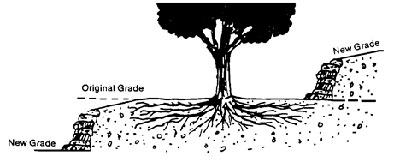 Figure 9: Terracing can substantially limit root injury. Reprinted with permission from Tree City USA Bulletin No. 7, National Arbor Day Foundation. |
Lowering the grade usually is less complicated than fills, but can be equally harmful. Where the grade has been changed near a tree, the most common damage is the complete severing of major roots in that area (Figure 8). This can cause decline, death or decreased stability to high winds. To protect the tree, terrace the grade (Figure 9) or build a retaining wall between the tree and the lower grade. Walls should encompass an area extending at least to the dripline.
Pruning Injured Trees
Trees with injured roots may show branch dieback quickly or within a few months after the initial injury. Prune dying branches to reduce insect and disease damage to the rest of the tree. Also prune to reduce any hazardous conditions on preserved trees. It is better to wait until the tree exhibits branch die back to see how much to prune, rather than to arbitrarily remove parts of the crown because you assume the root system was damaged. Wildfire regulations may require pruning to a height of 3m (10 feet) of all trees around your home and outbuildings.
Additional Information
Fact Sheets
Planttalk ColoradoTM
Websites
- Colorado State University Extension county office, http://extension.colostate.edu/staff-directory/?cn-s=&cn-cat=113
- Colorado State Forest Service, csfs.colostate.edu/index.htm
- American Society of Consulting Arborists, https://www.asca-consultants.org/
- Rocky Mountain Chapter of the International Society of Arboriculture, www.isarmc.org/pro/index.htm
- Colorado State Forest Service, Protecting Your Home from Wildfire: https://csfs.colostate.edu/wildfire-mitigation/protect-your-home-property-from-wildfire/
*C. Dennis, Colorado State Forest Service; and W.R. Jacobi, professor, bioagricultural sciences and pest management. **E. Hammond, Colorado State University Extension agent, horticulture, Adams County. 2/99. Revised 8/20.
Colorado State University, U.S. Department of Agriculture and Colorado counties cooperating. CSU Extension programs are available to all without discrimination. No endorsement of products mentioned is intended nor is criticism implied of products not mentioned.
Go to top of this page.





